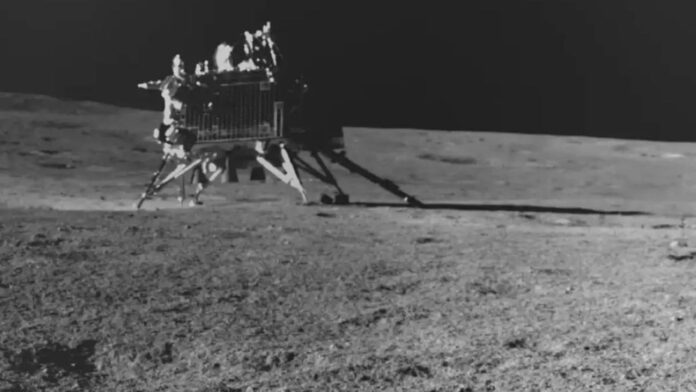As the Indian Space Research Organisation (ISRO) continues to try to contact the Chandrayaan-3 lander and rover, hopes that they may reawaken after the long lunar night are dwindling.
India became the fourth country to land on the Moon in August, and the first to do so near the lunar south pole. Since landing, the lander and rover have been conducting experiments to monitor the temperature at the landing site and investigate the composition of the lunar soil, only pausing short for a photoshoot.
Chandrayaan-3 Mission:
Smile, please!
Pragyan Rover clicked an image of Vikram Lander this morning.
The ‘image of the mission’ was taken by the Navigation Camera onboard the Rover (NavCam).
NavCams for the Chandrayaan-3 Mission are developed by the Laboratory for… pic.twitter.com/Oece2bi6zE
— ISRO (@isro) August 30, 2023
It identified sulfur, aluminum, calcium, iron, chromium, titanium, manganese, silicon, and oxygen during its original 14-day mission. Sulfur is of great importance to space-faring nations since it has the potential to be employed in the production of concrete. In addition, the lander observed movement beneath the surface, possibly due to a natural event.
It was technically “mission accomplished.” However, ahead of the lunar night, which lasts 14 days, the rover was put into sleep mode, with the goal of resuming operations with the sunrise a few weeks later. Unfortunately, no action has been detected on the rover or lander since the sun rose on Friday.
“Efforts have been made to establish communication with the Vikram lander and Pragyan rover to ascertain their wake-up condition,” an update from ISRO stated. “No signals have been received from them as of yet.” Attempts to make contact will continue.”
Surviving the night would be difficult, since temperatures near the pole dropped to -200°C to -250°C (-328°F to -418°F), potentially destroying the instruments on board, according to ISRO chief A.S. Kiran Kumar. He noted that, with no touch as of Monday, the “chances of reawakening are dimming with each passing hour.” Additionally, you can also read about- India to Launch First Solar Probe Aditya-L1 on September 2
“Unless the transmitter on the lander comes on, we have no connectivity,” Kumar told the BBC. “It has to let us know it’s alive.” We have no means of knowing if all other subsystems are operational.”
Attempts to establish contact will continue throughout the lunar day. But even if it doesn’t wake up, it has already accomplished so much.




























